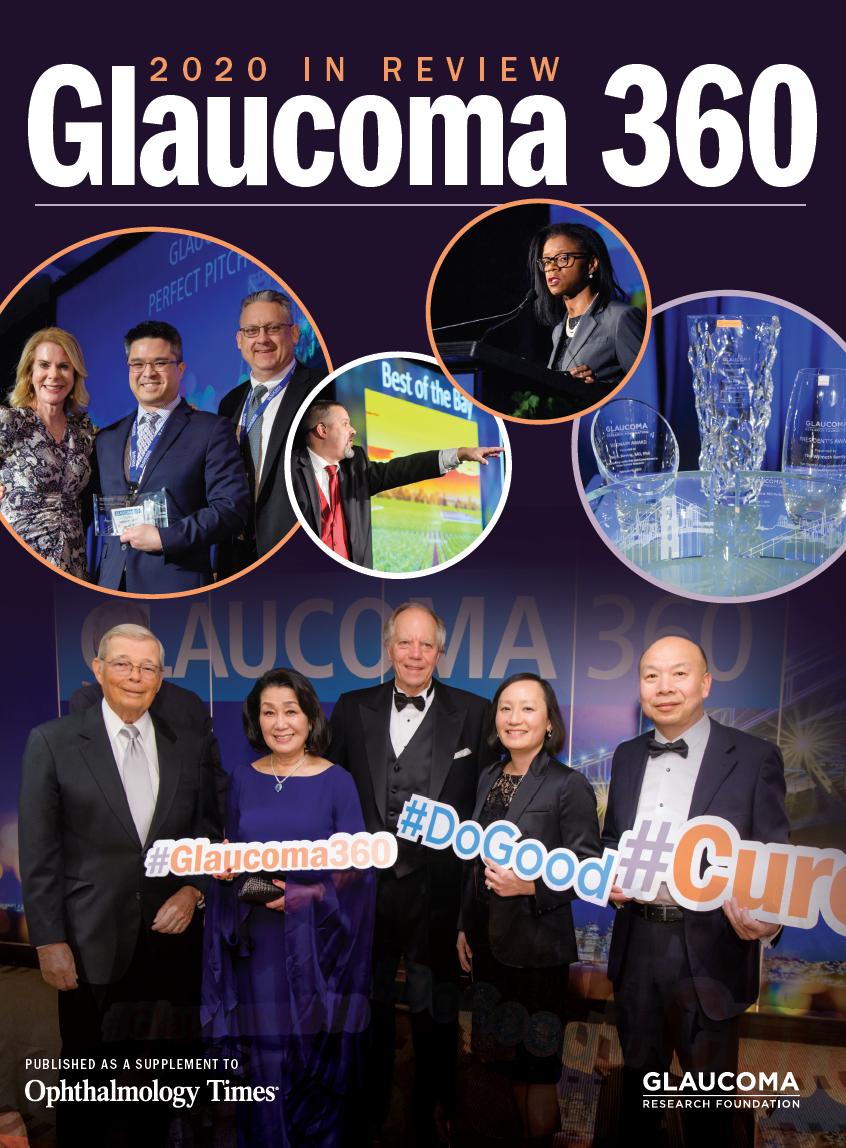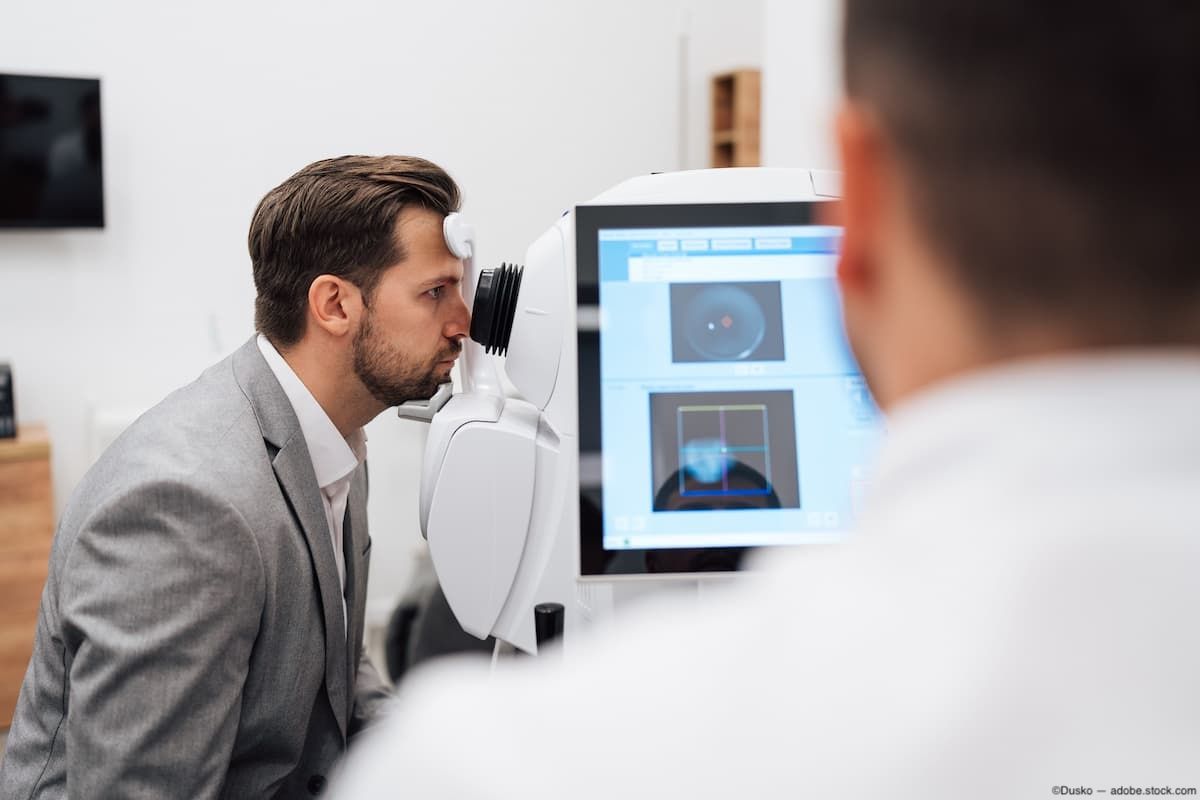Publication
Article
Next frontier in glaucoma: Beyond IOP-lowering treatments
Author(s):
Besides traditional medications, here are some of the many novel approaches to treat patients with glaucoma

Medications are not the only avenue to treat glaucoma. Industry representatives described their innovations to undermine the glaucomatous mechanism during the Glaucoma 360 annual meeting.
Sunita Radhakrishnan, MD, associate, Glaucoma Center of San Francisco and research director, Glaucoma Research and Education Group, and Ahmara Gibbons Ross, MD, PhD, assistant professor of ophthalmology, Hospital of the University of Pennsylvania, Philadelphia, were the co-moderators of a session on treatments that go beyond lowering the intraocular pressure (IOP) lowering.
Topical rho-kinase inhibitors can be used to relax the trabecular meshwork in the front of the eye, improve aqueous outflow, and lower IOP. However, Aerie Pharmaceuticals is taking advantage of their neuroprotective effects in glaucoma to prevent neuronal damage. This neuroprotective effect of rho-kinase inhibitors is used in other diseases but has not been harnessed in the eye, according to Casey Kopcznski, PhD, chief scientific officer, Aerie Pharmaceuticals, Inc.
Rho-kinase is the target because activation reduces the ability of the retinal ganglion cells (RGCCGs) to survive a glaucomatous insult, stops surviving cells from regenerating damaged axons, and increases neural inflammation in the back of the eye, he said. Rho-kinase inhibitors improve outcomes in animal models by protecting the RGCs and axons in the surviving cells.
Aerie Pharmaceuticals is now working on a sustained-release system to deliver small-molecule rho-kinase inhibitors to the back of the eye in a new drug-delivery platform (AR-13503 SR) injectable into the vitreous through a 27-gauge needle. The implant is currently in a phase 1 clinical trial for evaluation in the treatment of age-related macular edema and diabetic macular edema. After completion, the device will progress to a phase 2 neuroprotection study.
Cynthia Yu-Wai-Man, PhD, an medical research council clinician-scientist at King's College London and consultant ophthalmic surgeon in glaucoma and cataract, reported on a novel peptide nanoscale vehicle (LipTide, NanoGenics) that delivers gene therapy to affected cells. The product comprises a lipid core, a targeting peptide sitting on the lipid core that targets specific cells in different parts of the body, and a payload inside the core.
Yu-Wai-Man explained the greatest innovation with this product is that every part can be customized.
“The payload can be siRNA, DNA, any gene-editing tools, and artificial chromosomes,” she said. “The peptide can be customized to target specific cells, for example, integrin receptors on conjunctival fibroblasts. LipTide can also be customized for release by being anionic, cationic, and targeted to a different RNA and DNA payload."
Moreover, delivery can be subconjunctival, intravitreal, and intracameral, and for different system recruits.
The two 2 advantages of LipTide nanoparticles are the much higher specificity than the traditional liposomal vectors because of the targeted peptides sitting on the lipid core and the lower toxicity risk compared to with the viral vectors and a lower risk of oncogenicity.
Preclinical data have shown elimination of conjunctival scarring after glaucoma surgery is eliminated when genes were silenced using LipTide nanoparticles to deliver siRNA to conjunctival fibroblasts, doubling of bleb survival after glaucoma surgery, and significantly decreased scar tissue formation, cellularity, myofibroblast activation, and collagen formation.
Jeffrey L. Goldberg, MD, PhD, professor and chair of ophthalmology, Byers Eye Institute, Stanford University, reported on Renexus (NT-501), an investigational treatment for intravitreal sustained release of soluble ciliary neurotrophic factor (CNTF) receptor after intraocular implantation.
CNTF protects RGC survival and promotes long-distance axon regeneration. Neurotech Pharmaceuticals developed the platform-encapsulated cell therapy to take advantage of the protective effects of CNTF. A semi-permeable membrane is loaded with an implant that contains genetically engineered cells that secrete CNTF for a controlled, continuous intravitreal delivery intravitreally, Goldberg explained.
He reported that the Renexus implant has been used to treat 300 patients. “The cells stay viable and continue to secrete CNTF for at least 2 years and maybe indefinitely,” he said.
An open-label phase 1 trial evaluated the implant in 11 patients with glaucoma, and improvements were seen in the visual field and nerve fiber layer. A phase 2 multicenter trial of Renexus to treat glaucoma has started and initially enrolled 54 patients. Goldberg reported that the retinal nerve fiber layer and ganglion cell complex inner plexiform layer have thickened consistently and significantly in almost all patients along with visual field improvements. The protocol for a phase 2 expansion study based on the initial positive results to test the effects of 2 implants in one 1 eye has been submitted for FDA review.
Intranasal ST266 (Noveome Biotherapeutics), an amnion cell-derived secretome for optic nerve disease, comprises hundreds of growth factors and cytokines at low physiologic concentrations to reach the countless receptors on cell surfaces.
Drugs and proteins delivered to the cribriform plate at the back of the nose bypass the blood-brain barrier.
“We showed that drug transport via capillary action along the olfactory nerves from the nose to the brain resulted in the highest concentration of ST266 in the optic nerve,” said Larry Brown, ScD, executive vice president and chief scientific officer, Noveome Biotherapeutics.
The preclinical testing of ST266 showed that in an optic nerve crush model, the ganglion cell survival significantly increased and significantly decreased optic nerve demyelination., Iand in a model of experimental autoimmune encephalomyelitis model of optic neuritis after demyelination began, the visual acuity recovered to a level not significantly different from non-diseased control animals and there was a significant effect on axon survival.
A phase 1 study that includes nine 9 subjects with ocular hypertension should be completed by the third quarter of 2020 after which phase 2 efficacy studies will start.
“Intranasal ST266 appears to be a potential novel and noninvasive treatment for optic nerve disease,” Brown said.
ONL1204 (ONL Therapeutics, Inc.), a novel, first-in-class small-molecule Fas inhibitor on the surface of retinal cells, was designed to prevent their death and the ensuing inflammatory cascade.
The compound, which is injected intravitreally, is being tested in a phase 1 trial for retinal detachment. The initial results in humans showed a reduction of the inflammation process in the eye and was well tolerated.
David Esposito, president and chief executive officer, ONL Therapeutics, Inc., said the compound has potential as an IOP-independent glaucoma treatment for glaucoma, for dry age-related macular degeneration, and as a mutation-independent treatment for inherited retinal degeneration. He also said the company is seeing early-stage validation of a gene therapy treatment for glaucoma.
“ONL1204 provides a broad opportunity to protect a number of different processes that impact retinal cells,” he said.
ReNetX Bio has developed Axer204, a novel biologic protein, that is in a phase 1 study to reverse chronic spinal cord injury by regenerating central nervous system axons. There is also interest in applying the protein to glaucoma and regeneration of RGCs.
In glaucoma, the protein works by binding the axonal inhibitors blocking interaction with the Nogo receptor expressed in more than 99% of RGCs. The protein targets Nogo receptor signaling and enables neuroenhancement for optic nerve growth and neuroprotection for enhanced plasticity, said James Tsai, MD, MBA, professor and chair, Department of Ophthalmology at the Icahn School of Medicine at Mount Sinai, and is on the scientific advisory board of ReNetX Bio.
This neuroprotection, (i.e., preservation of RGCs independent of IOP lowering), has been validated in 3 glaucoma animal models. This biologic protein protected against RGC loss in elevated IOP models, prevented at least 40% loss of large RGCs, and promoted axonal growth in a crush model past the injury site of the injury.
“Axer204 is an important adjunctive therapy independent of IOP reduction that represents a novel mechanism of action for enhanced plasticity and RGC protection and it leverages a clinical-stage molecule currently in phase 1/2 spinal cord injury trials,” Tsai said. “Toxicology testing shows no safety findings. There is extensive preclinical validation and protein scale-up.”
The goal of the Catalyst for a Cure Consortium is to find a cure for glaucoma and formulate a strategy for vision restoration in affected patients.
The challenge as stated by Derek Welsbie, MD, PhD, assistant professor of ophthalmology, UC San Diego School of Medicine, in the absence of RGCs is to replace them, ensure the survival of the cells, and ascertain that the cells establish the appropriate connections in the eye.
This tall order is addressed by a team of four 4 principal investigators and their laboratories chosen by the Glaucoma Research Foundation board, who work together to accelerate the pace of discovery toward a cure for glaucoma. The four 4 laboratories are those of Anna La Torre, PhD, UC Davis; and those of Dr. Welsbie at, UC San Diego School of Medicine; Xin Duan, PhD, UC San Francisco; and Yang Hu, MD, PhD, Stanford University.
Welsbie reported that during the first year of the consortium, his laboratory in conjunction with that of Hu found and identified a set of molecules, which they identified can improve axon regeneration and RGC survival. Then in conjunction with La Torre, Welsbie reported that the same set of genes in retinal organoids developed by La Torre can improve RGC survival in development and axon outgrowth.
“Our plan is to use these RGCs as a substrate to transplantation to augment and optimize the approach with our functional genomic screening and eventually move toward a strategy for vision restoration,” Welsbie concluded.





